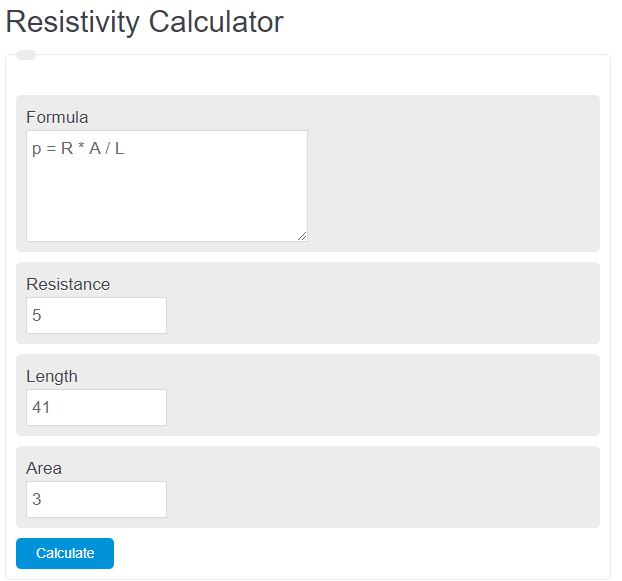Enter the total resistance, length, and cross-sectional area of a component. The calculator will evaluate and display the resistivity.
- Wire Resistance Calculator
- Resistor Divider Calculator
- Internal Resistance Calculator
- Parallel Resistance Calculator
- Series Resistance Calculator
- Resistance Per Meter Calculator
Resistivity Formula
The following equation is used to calculate the resistivity of an electrical component or wire.
p = R * A / L
- Where p is the resistivity
- R is the resistance
- A is the cross-sectional area
- L is the length
To calculate resistivity, multiply the resistance by the cross-sectional area, then divide by the length.
Resistivity Definition
Resistivity is a term used in electronics that describes the rate at which a component or wire resists the flow of electrons or electricity. It’s a resistance per unit of distance. So the longer the wire the lower the resistivity and vice versa.
Resistivity Example
How to calculate resistivity?
- First, determine the resistance.
Measure the total resistance of the component/wire.
- Next, determine the cross-sectional area.
Measure the cross-sectional area of the wire.
- Next, determine the length.
Measure the overall length of the wire.
- Finally, calculate the resistivity.
Calculate the resistivity of the wire using the formula above.
FAQ
Resistivity is a measure of the rate at which a wire or electrical component resists the flow of electrons.

